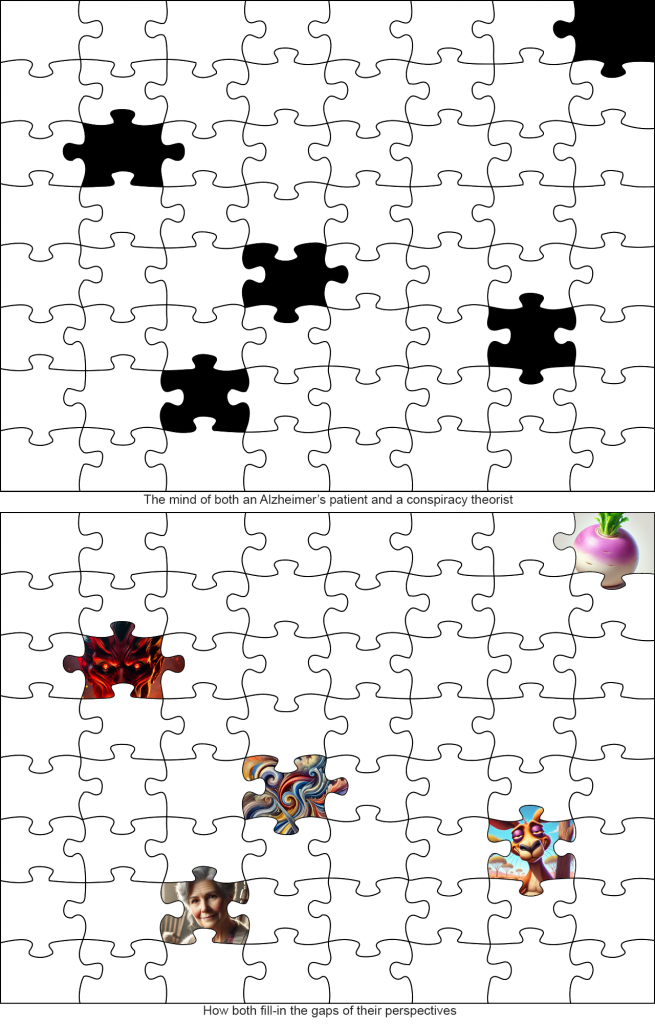“By changing nothing, nothing changes”.
Changing beliefs feels dangerous
Belief systems develop primarily to create a rubric for understanding our world. Belief systems, especially shared ones that create culture, provide predictability, uniformity, and safety.
Try to change someone’s beliefs and you directly threaten their sense of safety.
This is the principle reason why changing someone’s beliefs is damn difficult. A full-frontal assault on another person’s beliefs ignites a fear response because you are shattering their perception of the universe, their place in it, and everything that has made them safe and comfortable. They will resist, argue, and even engage in gun play to protect their belief system because being untethered from it appears to be dangerous.
Belief systems create blindness
There was a study whereby people were asked to scan a deck of cards and look for anomalies. In the deck was a red ace-of-spades, which is normally black. The repeating patterns of symbols for the cards caused people to miss this anomaly entirely.
The same exists with belief systems. When we develop a belief system to model our world, and it has any external confirmation at all, we then tend not to see (or at least reject) evidence contrary to the beliefs. The blindness aspect has a few flavors from outright invisibility of contra perspectives to polite dismissal of such without giving the new intel a second thought.
Which confirms the old adage that the best way to lie is to believe your lie 100%. If a person or group is fully vested in a false belief, they cannot be persuaded with reason to forsake it. It has become their reality, not just their opinion.
If a person cannot even see alternatives to their beliefs, then it is practically impossible for them to change them.
Perspective distortion prevents beliefs from changing
 |
 |
Belief systems act to focus attention on specific sub issues. This keeps people from seeing or even admitting there may be larger issues involved.
In these silly examples, we see that the closer we are to an object or a belief, the less we can see broader perspectives. In both of these pictures, there is a tennis ball, but in one it commands your complete attention and in the other it is insignificant.
But what constitutes insignificance? It can be argued that the tennis ball is supremely important and that without it the forest is meaningless. I won’t rate the two, but only note that if one focuses solely on the ball or the bark, then they are missing part of the overall picture and perspective distorts their perception.
Humans (and I’ll include my congressman) are perception-driven, and we all have distorted perceptions. These distorted perceptions often underpin our beliefs, which makes changing our beliefs even more difficult.
Perception feedback loops reinforce beliefs
One aspect of perception distortion is filtering. When a person with a belief system focuses on that system and ignores other elements, most of what they receive is perception (bias) confirmation. A monk in a geographically isolated monastery will not perceive anything other than the religious doctrine in which he already is vested. Likewise, a college professor who exchanges books and philosophy with other college professors is sunk into cloud palace thinking and may never understand what the average middle-class family knows, thinks and believes.
This feedback loop has been under assault in the age of social media. Recall that any belief system threatened with “outside thinking” can produce a nasty backlash. Before social media, someone who disagrees with you might never meet you and you might never hear their beliefs and perspective. Now they are virtually shouting in your face, and thus threatening your belief structures. Reactively, you might shout back and threaten theirs.
People quite often resort to “motivated reasoning”, which means they exercise reasoning only in the pursuit of defending their existing beliefs. This is one of the stronger systems that prevent people from accepting facts and knowledge to shape their beliefs. If one has applied a biased form of reasoning, the results are predetermined and not necessarily correct.
Social media has increased free speech and n-dimensional threats to everybody’s belief systems.
Reinforced Beliefs as Neurological Protection
Our brains are computers, and like all computers, they are programmed.
What you hear, see, learn and experience over a lifetime does more than just become thoughts. It functionally rewires your brain. To drop a belief that you had programmed and reprogrammed into your mind is hard because it requires rewriting the program.
Noted in The Encultured Brain: An Introduction to Neuroanthropology, the authors state that “Neuroanatomy makes experience material.” The neural system adapts through long-term refinement and remodeling, which leads to learning, memory, maturation, and even trauma. Hence, cultural concepts (including beliefs and belief systems) become anatomy. You are in effect hard-wired over time.
Missing Pieces and Invented Perception Create Belief Rigidity
The human brain is a very fast pattern-matching machine that attempts to take fragments of information and write entire stories from them.
 The problem is that to do so, the mind has to fill-in a lot of blanks.
The problem is that to do so, the mind has to fill-in a lot of blanks.
Anyone who has ever cared for an Alzheimer’s patient sees this process on a scary scale. An Alzheimer’s brain is like a jigsaw puzzle with pieces missing. Since even short-term memories necessary for daily function disappear, the patient may substitute any stray thought to complete the picture and make sense of the day’s events. This is why the mother who loved you for many decades will suddenly accuse you of stealing her car (which she surrendered years ago).
Yet otherwise healthy minds can go through the same process. That conclusions by Alzheimer’s patients and conspiracy theorists are equally untenable by executing the same process says much about the latter group.
In belief systems, especially on the faith end of the continuum, a lot of missing puzzle pieces need to be gathered to make a whole picture. That theologians or conspiracy mavens pound orange squares into empty circles on a blue board exposes that both are constructing a holistic picture for which they cannot find all the puzzle pieces.
For belief systems, the inappropriate pieces are often invented. When invented, to complete the puzzle, contra information threatens both the “finished” picture the believer has made, but also his reasoning skills … or lack thereof … that invented the missing puzzle pieces. Such challenges are met with resistance, in no small part because to the Alzheimer patient or conspiracy theorist, their very sanity and thought processes are now challenged.
Dream Machine
As mentioned before, the human mind is a fast pattern matching machine. Being able to correlate senses makes for rapid learning.
It may also make vivid dreams, hallucinations and beliefs.
My pet theory (echoed by a few folks) is that oddball dreams are a byproduct of the subconscious mind running through its inventory of sensory input, matching patterns, and in the process glueing together strings of senses that are not at all related, but which can produce vividly hilarious or terrifying dreams.
This power to use existing internalized “vision” might aid in solidifying, and thus making “real”, certain beliefs. Some religions conceive of God but describe God as The Father. Anyone who knew their dad had an immediate correlation between everything their dad was (good and bad), amplified and projected onto the notion of God. People who love God may have had kind fathers. Those who fear God …
Likewise with a bigot who has had very few encounters with the people he hates. What few and negative glimpses the bigot has are amplified and projected onto an entire race, religion, ethnic group, or political party.
All that said, the same mental gymnastics are also the core of innovation. Seeing connections and symbiosis between disjointed things has been the underpinning of technology, which in turn has been the underpinning of human advancement.
Hierarchical Beliefs Create Belief System Anchors
Often belief systems evolve in layers. A lower level belief exists only by virtue of the higher level belief. Sin #47 exists only because a shaman created a cannon (in itself a belief system), and he could only do that because God ordained it.
The more layers, and the more authoritative the top layer is, the harder it is for a believer to relinquish any belief in the system. To deny that Sin #47 is actually a sin is to deny the cannon, and to deny the cannon is to deny God. And that upsets God’s “representatives” because you have taken a block out of their Jenga tower belief system.
Oddly, this is a good means to get people to change lower-level beliefs, but we’ll wallow in that muck comes later.

Comments
Why Beliefs Are Difficult To Change — No Comments
HTML tags allowed in your comment: <a href="" title=""> <abbr title=""> <acronym title=""> <b> <blockquote cite=""> <cite> <code> <del datetime=""> <em> <i> <q cite=""> <s> <strike> <strong>